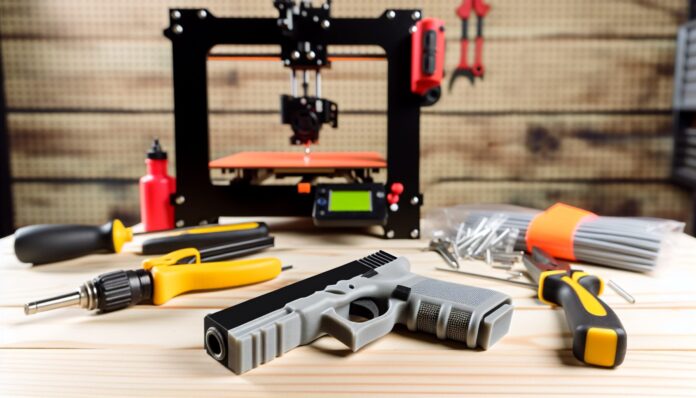As 3D printing technology becomes more accessible and advanced, gun safety advocates are sounding the alarm over a troubling trend: the rise of untraceable, 3D-printed firearms. These so-called “ghost guns” are increasingly being found at crime scenes across the United States, prompting urgent calls for regulatory action.
The Growing Threat of 3D-Printed Ghost Guns
Ghost guns are firearms that lack serial numbers, making them virtually impossible to trace. While some are assembled from kits, others are entirely 3D-printed using widely available digital blueprints and consumer-grade printers. According to gun control groups like Everytown for Gun Safety, the proliferation of these weapons poses a serious threat to public safety.
“We’re seeing a surge in the use of ghost guns in crimes,” said Nick Suplina, senior vice president for law and policy at Everytown. “These weapons are untraceable and can be made by anyone with access to a 3D printer and the internet.”
Law enforcement agencies across the country have reported a sharp increase in ghost gun recoveries. The Bureau of Alcohol, Tobacco, Firearms and Explosives (ATF) reported that nearly 20,000 suspected ghost guns were recovered in criminal investigations in 2021 alone—a tenfold increase from 2016.
How 3D Printing Enables Unregulated Firearm Production
3D printing, or additive manufacturing, allows users to create complex objects layer by layer from digital files. In the context of firearms, this means that key components—such as lower receivers or even entire guns—can be printed using plastic or metal materials. These parts can then be assembled into fully functional weapons, often without any background checks or serial numbers.
While 3D-printed guns were once considered unreliable or dangerous to use, advances in materials and printer technology have made them increasingly viable. Online communities dedicated to DIY firearms have also grown, sharing files and tutorials that make it easier than ever to produce a working gun at home.
“The technology has evolved to the point where these weapons are not only functional but durable,” said Suplina. “That’s what makes them so dangerous.”
Legal and Regulatory Challenges
Federal law currently requires that firearms manufactured by licensed dealers include serial numbers and that buyers undergo background checks. However, these rules do not always apply to homemade guns, especially those made for personal use. This legal gray area has allowed ghost guns to flourish.
In 2022, the Biden administration introduced new rules requiring that ghost gun kits be treated like traditional firearms, including background checks and serial number requirements. However, enforcement remains a challenge, particularly when it comes to 3D-printed guns that are not sold as kits but created entirely from digital files.
Gun rights advocates argue that restrictions on 3D-printed guns infringe on Second Amendment rights. Meanwhile, gun safety groups are pushing for stronger federal and state laws to close loopholes and regulate the distribution of digital gun blueprints.
Technology, Responsibility, and the Future of 3D-Printed Firearms
The debate over 3D-printed guns highlights the broader tension between technological innovation and public safety. While 3D printing has revolutionized industries from aerospace to healthcare, its misuse in the production of untraceable weapons underscores the need for responsible regulation.
Some states, including California and New York, have passed laws banning the possession or distribution of ghost guns. Others are considering similar measures. At the same time, tech platforms are under pressure to remove or restrict access to gun-printing files, though enforcement remains inconsistent.
Experts warn that without coordinated action, the problem will only grow. “We need a comprehensive approach that includes legislation, enforcement, and public awareness,” said Suplina. “Otherwise, we’re going to see more of these weapons on our streets.”
As 3D printing continues to evolve, so too must the policies that govern its use. Balancing innovation with safety will be key to ensuring that this powerful technology is used for good—not harm.
Source: ABC News

